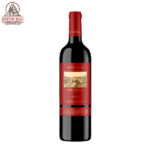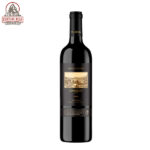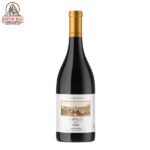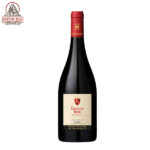Pairing wine with any one of the many diverse styles of Chinese food can be challenging to the best of wine afficianados. Hopefully our guide here can help you to make your choices for food and wine pairing, much easier.
Anhui Cuisine
Anhui cuisine is one of the lesser known of the Eight Great Cuisines of China. Anhui Province is a poorer inland province west of Shanghai, so its food is basically a hearty mountain peasant food, famously the diet of the Yellow Mountains and the tourist area of Huangshan.
The best Anhui food is known for incorporating wild ingredients from the local mountains for a tasty, different, and healthful cuisine.
Dry white wines with fish based food. Medium bodied, off-dry red wines with meat based dishe. These are typically the best rules to follow with Anhui cuisine.
Click here to learn more about Anhui Cuisine and the wines that pair well.
Cantonese Cuisine
Cantonese Cuisine or Yue cuisine originates from Guangdong Province (SE China around Hong Kong), and it is the most widely served style of Chinese cuisine in the world. This is because most of the Chinese who immigrated and set up restaurants overseas were from Guangdong. Though what’s served abroad now has departed from authentic Yue cuisine.
What distinguishes Cantonese cuisine is lightly cooked fresh vegetables and meat, and sweet sauces. This style of food encourages braising and stewing meats and adding various sauces.
Almost all cantonese dishes are perfectly suited to white wines. Typically lean towards dry or off dry wines. The colder serving temperatures of white wines also marry with the typically hotter climate across Guangdong and the south of China.
Click here to learn more about Cantonese Cuisine and the wines that pair well.
Fujian Cuisine
Fujian Cuisine originates from the southeastern province of Fujian on the Pacific. The history of the cuisine dates back 5,000 years. Great seafood soups and the precise use of scintillating, but not tongue numbing, spices are the highlights.
Logical pairings with Fujian cuisine are dry white wines with fish and seafood dishes. Sweeter style wines for the spicy dishes and medium body reds for meat based soups and main courses.
Click here to learn more about Fujian Cuisine and the wines that pair well.
Hot Pot
Hot pot is a Chinese cooking method, prepared with a simmering pot of soup stock at the dining table, containing a variety of East Asian foodstuffs and ingredients. While the hot pot is kept simmering, ingredients are placed into the pot and are cooked at the table, in a manner similar to fondue.
Choosing wines without knowing what is likely to be consumed is challenging, so to simplify the decisions, understand the likely use of chilli spices in the broth and based your wine pairing on this.
Sweet wines for the very heavy use of chilli spices, moving towards drier wines as the use of chilli reduces. South China hot pots tend to work well with dry white (due to the use of seafood and little or no chilli). Western China hot pots tend to work best with sweet red wines. Eastern China hotpots with sweet white wines. North East China hotpots with dry reds.
Click here to learn more about Hot Pot and the wines that pair well.
Hunan Cuisine
Most tourists who visit China get to know the spicy red hot flavours of Sichuan cuisine since it is a tourist favourite. But in Hunan Province, the food is maybe even hotter. Their food tastes less numbing and sourer.
The sour and salty food flavours pair well with sweeter wines and lighter bodied medium dry wines.
Click here to learn more about Hunan Cuisine and the wines that pair well.
Jiangsu Cuisine
Jiangsu cuisine is one of the lesser known of the Eight Great Cuisines of China among foreigners. Jiangsu Province has the highest per capita income. Probably for this reason, the food is more gourmet style. It is very refined and presented colourfully and artistically.
Probably the most accommodating style of food for the true wine lover. A style where the western approach to food and wine pairing really works. Pairing white with fish and poultry. Red with darker meats. Drier wines (both red and white) are truly in their element with Jiangsu cuisine.
Click here to learn more about Jiangsu Cuisine and the wines that pair well.
Korean Barbecue
Korean barbecue refers to the popular method in Korean cuisine of grilling meat, typically beef, pork, or chicken.
As a wine pairing, we can follow the simple western rules. White wines with chicken. Light bodied red wines with pork dishes. Medium bodied reds with beef dishes.
Click here to learn more about Korean Barbecue and the wines that pair well.
North East Cuisine
North East Cuisine and its hearty food is generally more acceptable to Westerners. Enjoy roast duck from Beijing’s imperial kitchen, beef and dairy from Inner Mongolia, flatbreads and roasts from the Muslim northwest, and Korean dishes in the northeast.
Another perfect style of cuisine for following the western approach with wine pairings. Dry whites with seafood. Sparkling dry whites with shell fish. Medium bodied reds with the slightly chilli spiced foods. Big, full bodied reds with meat dishes.
Click here to learn more about North East Cuisine and the wines that pair well.
Shandong Cuisine
Shandong Province has a long coast, so fresh river fish and seafood were always the local delicacies. Typically wines that work best with Shandong food are sweeter wines, to balance the sour contrast of the vinegars that are used heavily. Sweet red wines work perfectly with most dishes, or sweet white wines with fish based dishes.
Click here to learn more about Shandong Cuisine and the wines that pair well.
Sichuan Cuisine
Sichuan province is the birthplace of many dishes that are well-received globally. Sichuan food, originated from the Southwestern region of China, is the most widely served cuisine in China itself.
The quick and simple guide to pairing with Sichuan food is simple – the more chilli spice, the lighter the wine. Full bodied reds typically don’t work with hot fire tastes. If the meal is very hot, look for white wines with some sweetness. For medium levels of chilli spice, aim for drier whites, or rose wines. For minimal or no chilli spices, look for medium bodied red wines.
Click here to learn more about Sichuan Cuisince and the wines that pair well.
Siu Mei
Siu mei (Chinese: 燒味) is the generic name in Cantonese cuisine given to meats roasted on spits over an open fire or a huge wood burning rotisserie oven.
Medium dry, light bodied red wines, can work well with Siu Mei. Alternatively, in hotter weather, pairing cold and dry white wines can enhance the richer flavours and pair very well.
Click here to learn more about Siu Mei Cuisine and the wines that pair well.
Zhejiang Cuisine
Zhejiang Cuisine originates from the populous and rich eastern province of Zhejiang on the Pacific. If you don’t like spicy cuisine, but prefer fish and seafood, then this is the food style for you.
Zhejiang is the style of food where convention can be broken. While in the west, we would always pair white wines with seafood and poultry, the food style of Zhejiang can present a rare opportunity to pair seafood with dry rose wines, and light bodied red wines.
Click here to learn more about Zhejiang Cusine and wines that pair well.





